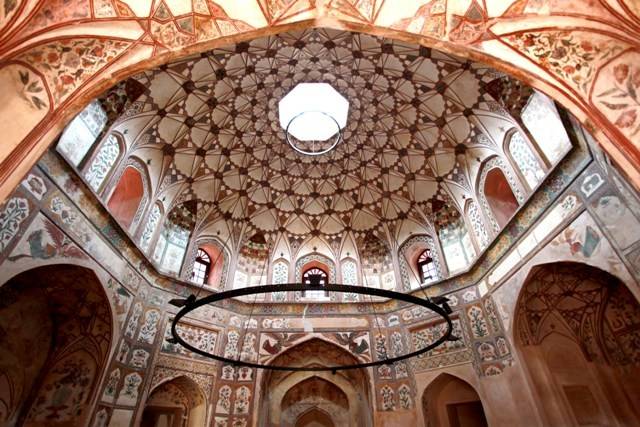
Shahi Hammam existed in Lahore old city since the 17th century. It was built in 1634 by the Mughal courtier Wazir Khan or Hakim Ilm ud Din Ansari but remained unnoticed because there was no proper publicity or use of this place and it was not a known tourist spot.
In 2015, this monument gained popularity when it was conserved by the Walled City of Lahore Authority and Aga Khan Trust for Culture Services Pakistan and in 2016 it received the UNESCO’s Asia Pacific Award for Merit. This award was for the best conservation practices and the manner in which this hidden gem was conserved by the talented and skilled artisans and architects.
Now let me take you to this monument which is located in Delhi Gate Lahore Walled City and is the only existing Royal Bath, one of the few remainders of 17th century monuments built during the reign of Mughal Emperor Shah Jahan.
Wazir Khan who was a known Hakeem (herbal doctor) was called all the way from Chiniot to cure the illness of Noor Jehan, the wife of Mughal Emperor Jahangir. The Wazir got associated with the emperor and thus gained popularity among the royals and court. The public bath was then named after Wazir Khan and on the same path; the beautiful Mosque of Wazir Khan was also built in the subsequent years.
Such baths in those times were common and had facilities like bathing, massage, spa, sauna and what not. The existence of Hammam made sense at this place if we study the geography of this area. The travelers would enter Lahore through Delhi Gate, freshen up in Hammam and then went further for offering prayers at the Wazir Khan Mosque ahead. It is claimed by the historians that there was a rest house (Wazir Khan Sarai) opposite the existing Hammam. The rest house provided facility to the travelers for overnight stays. It was demolished in the Sikh period and later when a disruptive flood struck Lahore.
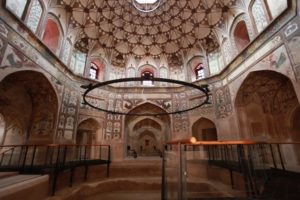
Historians claim that the Hammam was very perfectly managed and must be a fashionable service for travelers and public at that time. There were attendants who would welcome the public inside the Hammam and informed them about the services being offered.
The Hammami or the attendant provided the people with towel, soap and other accessories they wanted. People would sit in the waiting area of the Hammam for their turn. The hammami or the attendant would call the person on his turn and offer the services of cold and hot bath along with massage. Hair cutting, trimming, manicure and pedicures were also a provision. The charges of all the services were minimal so that it could serve the masses and all economic classes.
Some historians also claim that it was meant exclusively for the royal women in the beginning. But eventually it was converted into a public bath, and few days of the week were specified for women. The services for women were offered by female attendants in the Hammam.
Now come to the building of the Hammam which is still skillfully festooned with fresco work. The cold bath area or the main hall is an eye-catching success of fresco with all the walls and ceilings adorned with multicolored motifs and designs. This demonstrates the Emperor’s interest and attention to details for the public. Small openings in the ceiling of each room were made for ventilation and lighting purposes.
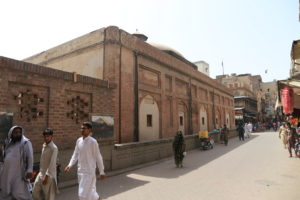
How did this Hammam functioned is another interesting story. Experts say that steam channels were prepared under the floor which are called the hypocaust systems. The woods were burnt under huge furnaces having water and then the steam would rotate through those channels, heating up the floor and the water in the reservoirs. The water pipes in the form of tunnels and channels were concealed between the walls which provided fresh water to the people. The used water was drained out through the open drain channels in the floor which was collected in a central pipeline from where it was thrown into the main drain of the area. This is a mind blowing system. Today we see 21 interconnected rooms in this Hammam.
It is said that while the British were rebuilding Delhi Gate, some part of the Hammam was also demolished and thus what we see today is the remaining portion of the Shahi Hammam.
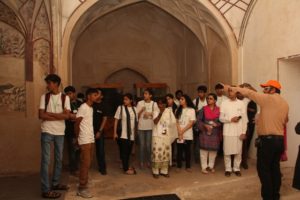
Shahi Hammam like many other Mughal era buildings experienced unusual treatment during the Sikh and British eras. Its heating system was destroyed during the Sikh rule and many ornaments were pulled out of the ceilings and walls. During the British rule, it was transformed into a lodging for police and soldiers. After 1947 it was changed into a boys’ primary school, a girls’ vocational school, a dispensary and also served as office for various government departments. Rooms to provide residences for the government employees were also erected on the roof top. The northwestern rooms (Hujras) were rented out as shops and additional shops or encroachments were made on the northern, western and southern façades of the Hammam.
These encroachments resulted in damaging the structure as well as water ingress in the foundations. In short, every effort was made to destroy the elegance of Shahi Hammam but somehow it survived. This also depicts the solid structure and stability of the building material that was used in its construction. The building passed every test of commotion effectively.
Almost 52 encroachments from Shahi Hammam were removed in 2012 by the Walled City of Lahore Authority and later in 2014 the complete conservation of building started in partnership with Aga Khan Trust for Culture Services Pakistan.
Somewhere in a previous conservation and use the walls of different rooms inside the Hammam were painted with white wash which was removed through certain chemicals for revealing the fresco underneath. For this task fresco experts were called from Sri Lanka who toiled with the students of National College of Arts. This was a good initiative as training our own resource in fresco.
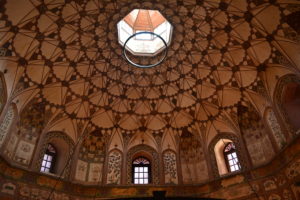
Marble floors were laid in all the rooms of the Hammam in 1991 restoration by the Archaeology Department. These floors were excavated in present conservation to re-establish the hypocaust system.
The conservation was completed in two years as it is always a time taking process. A retaining wall was built around the Hammam as its original ground level was exposed during the conservation which is almost eight feet below the present street level. Also the original entrance towards the western side of Hammam was opened after conservation and now tourists access the Hammam from this side. State of the art canteen and souvenir shop has also been set up in the premises of Hammam.
As you go inside the Hammam now you will get a lifetime experience. The old times waiting area has now been converted into a conference room with audio visual facilities for the tourists. The hypocaust system is preserved for the tourists to take a look at. The cold bath and hot bath areas are beautifully and technically conserved and display the real art of the Mughal builders.
